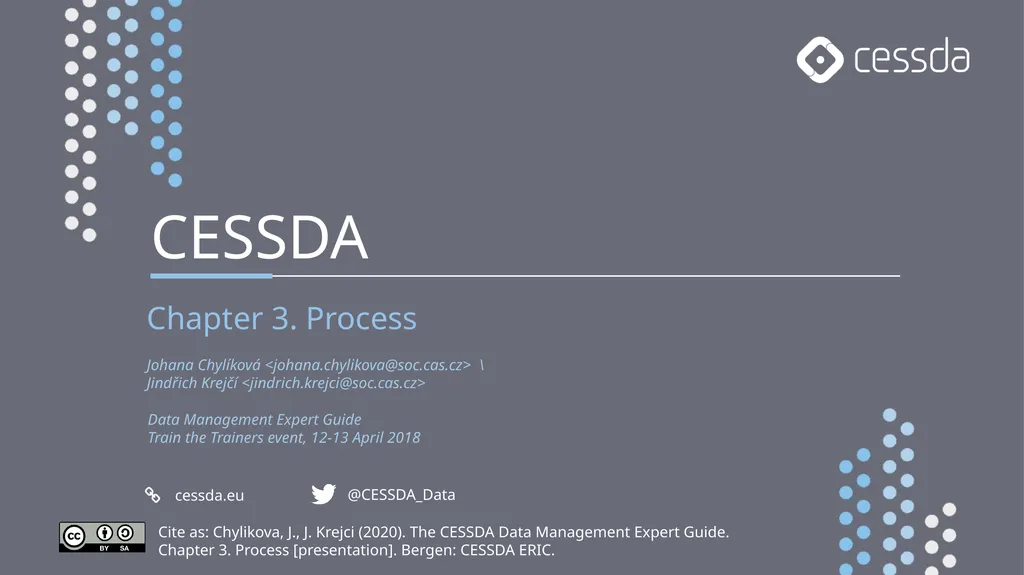CESSDA Chapter 3. Process Johana Chylíková
Author : natalia-silvester | Published Date : 2025-05-17
Description: CESSDA Chapter 3 Process Johana Chylíková johanachylikovasoccascz Jindřich Krejčí jindrichkrejcisoccascz Data Management Expert Guide Train the Trainers event 1213 April 2018 Cite as Chylikova J J Krejci 2020 The
Presentation Embed Code
Download Presentation
Download
Presentation The PPT/PDF document
"CESSDA Chapter 3. Process Johana Chylíková" is the property of its rightful owner.
Permission is granted to download and print the materials on this website for personal, non-commercial use only,
and to display it on your personal computer provided you do not modify the materials and that you retain all
copyright notices contained in the materials. By downloading content from our website, you accept the terms of
this agreement.
Transcript:CESSDA Chapter 3. Process Johana Chylíková:
CESSDA Chapter 3. Process Johana Chylíková \ Jindřich Krejčí Data Management Expert Guide Train the Trainers event, 12-13 April 2018 Cite as: Chylikova, J., J. Krejci (2020). The CESSDA Data Management Expert Guide. Chapter 3. Process [presentation]. Bergen: CESSDA ERIC. Data entry and integrity Quantitative coding Qualitative coding __________________________ Weights of survey data File formats and data conversion Data authenticity What is the chapter Process about? Data entry and data integrity Data integrity =„stored data should correspond to gathered data“ = assurance of preservationof original information contained in the data. Stored data <=> original information from the research „Data authenticity“ It is important to mention = in the data processing, data integrity is at stake. Subchapter: Data entry Survey data: Data entry procedures have changed over the recent years: BEFORE: manual data entry (phases: data collection, data entry, data editing/checking) NOW: computer technologies, automated data entry (CAPI) Automatic data entry: prevents some types of errors, but produces others. Errors in scripts in CAPI may cause systematic shifts in data; example: gender of a respondent is programmed wrongly – all analyses regarding gender are wrong Data entry: Quantitative data Reduce burden on those who enter data manually Check the completeness of records (cases, variables) Conduct data entry twice: approx. 20 percent of questionnaires entered twice by two different persons compare values, if difference in single value, get back to questionnaire and enter the right value. Perform in depth checks for selected records: randomly selected records, e.g. 5–10% of all records subject of more detailed, in-depth check. Questionnaire scanning: (=data not entered manually, but scanned) do scanning twice, compare values Minimizing errors in manual data entry I. Perform logical and consistency checks: Check minimal and maximal values of variables, Check the relations between associated variables (r(education;age)); Compare your data with historical data (e.g. check the number of household members with the previous wave of a panel survey). Automated checks - CAPI, data entry software: set the range of valid values apply filters to manage the data entry CAPI software= used by the data collectors; expensive; individuals can't afford it. Write your own program or syntax to check for discrepancies. An example of a SPSS syntax to check your data Logical check of income: The household income cannot be SMALLER than individual income Minimizing errors in manual data entry II. Minimizing errors in manual data entry II. Variable names: ide.10a -














